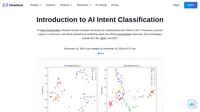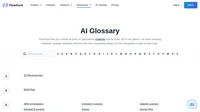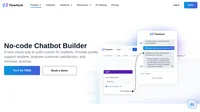Unsupervised learning, also known as unsupervised machine learning, is a type of machine learning (ML) technique that involves training algorithms on data sets without labeled responses. Unlike supervised learning, where the model is trained on data that includes both input data and corresponding output labels, unsupervised learning seeks to identify patterns and relationships within the data without any prior knowledge of what those patterns should be.
Key Characteristics of Unsupervised Learning
- No Labeled Data: The data used to train unsupervised learning models is not labeled, meaning that the input data does not have predefined labels or categories.
- Pattern Discovery: The primary objective is to uncover hidden patterns, groupings, or structures within the data.
- Exploratory Analysis: It is often used for exploratory data analysis, where the goal is to understand the underlying structure of the data.
Common Applications
Unsupervised learning is widely used in various applications, including:
- Customer Segmentation: Grouping customers based on purchasing behavior or demographic information to better target marketing efforts.
- Image Recognition: Identifying and categorizing objects within images without predefined labels.
- Anomaly Detection: Detecting unusual patterns or outliers in data, useful for fraud detection and predictive maintenance.
- Market Basket Analysis: Finding associations between products purchased together to optimize inventory and cross-selling strategies.
Key Methods in Unsupervised Learning
Clustering
Clustering is a technique used to group similar data points together. Common clustering algorithms include:
- K-Means Clustering: Divides data into K distinct clusters based on the distance of data points from the centroids of the clusters.
- Hierarchical Clustering: Builds a hierarchy of clusters either by progressively merging smaller clusters (agglomerative) or by progressively splitting larger clusters (divisive).
Association
Association algorithms uncover rules that describe large portions of the data. A popular example is Market Basket Analysis, where the goal is to find associations between different products purchased together.
Dimensionality Reduction
Dimensionality reduction techniques reduce the number of variables under consideration. Examples include:
- Principal Component Analysis (PCA): Transforms data into a set of orthogonal components that capture the most variance.
- Autoencoders: Neural networks used to learn efficient codings of input data, which can be used for tasks such as feature extraction.
How Unsupervised Learning Works
Unsupervised learning involves the following steps:
- Data Collection: Gather a large dataset, usually unstructured, such as text, images, or transactional data.
- Preprocessing: Clean and normalize the data to ensure it is suitable for analysis.
- Algorithm Selection: Choose an appropriate unsupervised learning algorithm based on the specific application and type of data.
- Model Training: Train the model on the dataset without any labeled outputs.
- Pattern Discovery: Analyze the output of the model to identify patterns, clusters, or associations.
Benefits and Challenges
Benefits
- No Need for Labeled Data: Reduces the effort and cost associated with labeling data.
- Exploratory Analysis: Useful for gaining insights into data and discovering unknown patterns.
Challenges
- Interpretability: The results from unsupervised learning models can sometimes be difficult to interpret.
- Scalability: Some algorithms may struggle with very large datasets.
- Evaluation: Without labeled data, it can be challenging to evaluate the performance of the model accurately.
Introduction to AI Intent Classification
Discover how AI Intent Classification enhances interactions, boosts user satisfaction, and streamlines business operations across various sectors.



